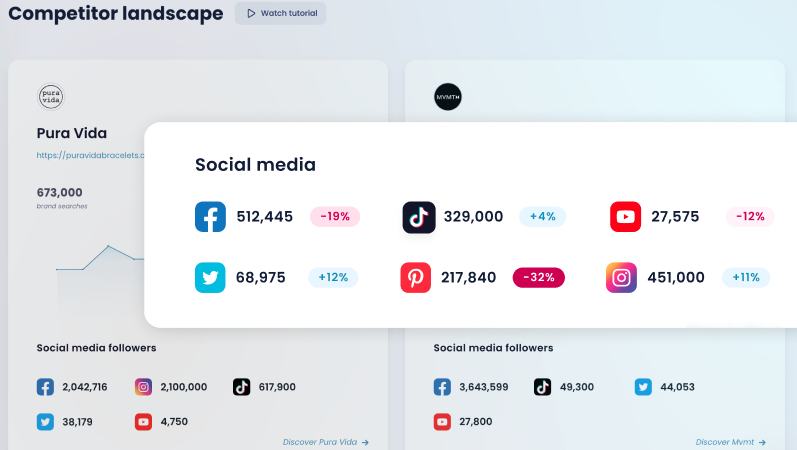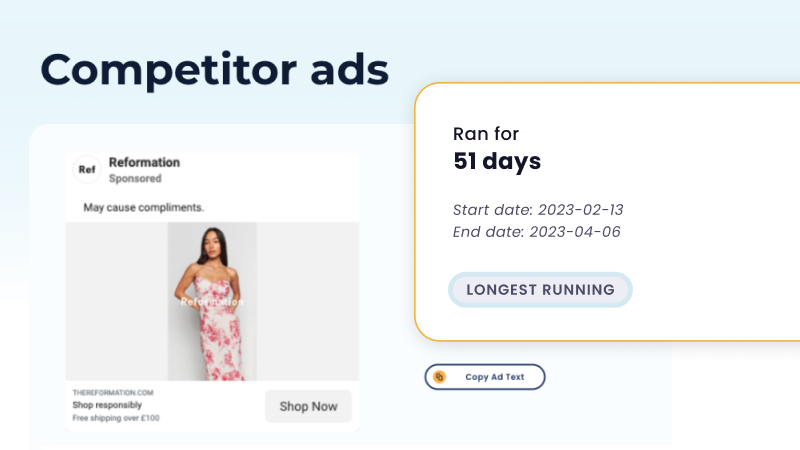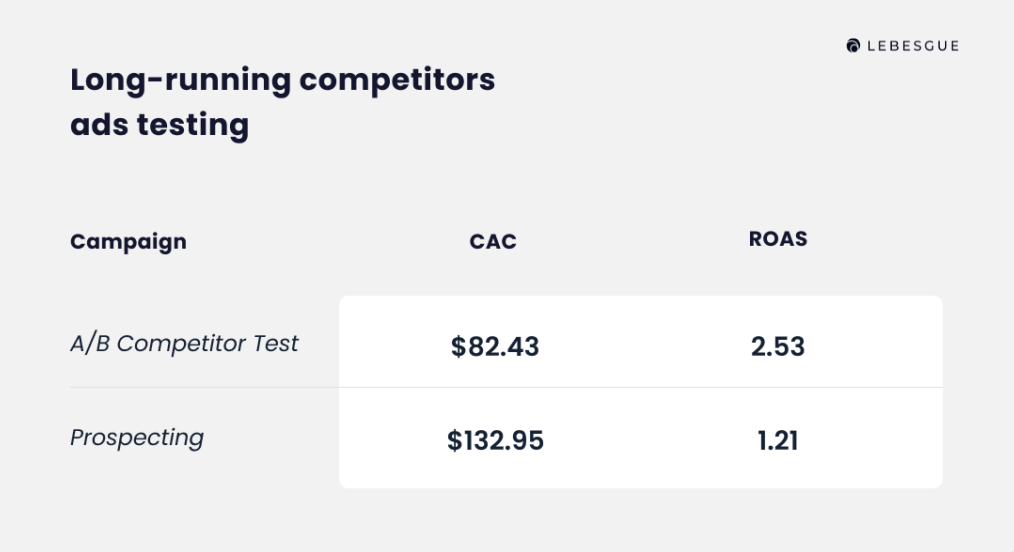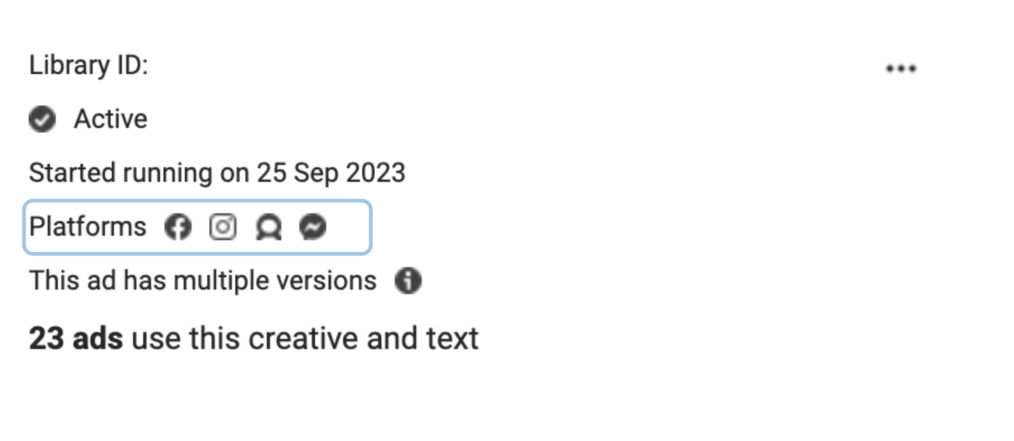In the world of eCommerce, understanding your competitors is a must. And when we introduce Facebook ads into this equation, it becomes even more vital to stay informed. As you’re likely aware, Facebook ads are one of the simplest ways to boost your sales when you have the know-how. But here’s the kicker – with the help of your competitors, you can ramp up your results even faster. That’s right, your competitors can assist you in achieving better advertising outcomes. Stick with us to learn how Facebook Ads competitor analysis can increase your profits.
Competitive Benchmarking
First, let’s start with competitive benchmarking. Competitive benchmarks, also known as benchmarking, refer to the process of comparing your own performance or practices against those of your competitors or industry leaders in a specific area or aspect of your business.
This comparison allows you to assess where you stand relative to your competitors and identify areas where you excel or need improvement. The goal is to set performance standards, uncover best practices, and develop strategies for improvement based on the insights gained from the comparison.
When we talk about competitive benchmarks in the context of Facebook ads and social media followers, we are referring to the practice of comparing your performance metrics in these areas to those of your competitors or industry peers. Here’s what it means in these specific contexts.
Facebook Ads Competitive Benchmarks
So, Facebook Ads competitive benchmarks involve analyzing how your ads perform compared to your competitors or others in your industry. You may compare metrics such as click-through rates (CTR), conversion rates, ad spend, engagement levels, and return on ad spend (ROAS) to assess whether your Facebook ad campaigns meet or surpass industry standards.
Social Media Follower Competitive Benchmarks
In the context of social media followers, competitive benchmarks entail comparing the growth and engagement of your social media followers (e.g., on platforms like Facebook, Twitter, Instagram, etc.) to those of your competitors.
You may examine metrics such as follower growth rate, likes, comments, shares, and overall engagement levels to evaluate how your social media presence stacks up against your competitors.

Lebesgues Insights: How to use Competitors' strategies to advantage
But, we know that it can be hard to start doing Facebook ads competitor analysis. There is so much advice and best practices, so it’s easy to get too much of everything.
To help you with doing competitor analysis and using the data that you have to your advantage we’ll tell you the secret of our customer that increased profit based on competitors’ knowledge and strategies. Without further ado, let’s dive in!
Step ONE: Identify what your competitors are doing on Facebook Ads
When it comes to analyzing your competitors, the first important step is getting a good look at what they’re doing with their Facebook ads. But it’s not just about what’s happening right now; it’s also about what they’ve been doing over time.
Imagine their long-running ads as valuable clues. They show us what’s been working really well for your competitors, bringing in customers and profits. By noticing these patterns, you can use similar content and strategies in your own Facebook ads, which can lead to success.

Plus, with Lebesgue’s Competitor Intelligence feature, you can access all this data conveniently in one place. You won’t need to spend hours researching; it’s all there for you.
You can even see all the ads your competitors have run in the past and how long they were active, giving you a complete picture of their advertising history. It’s a real-time-saver for your competitive analysis.
Step TWO: A/B Testing with Long-Running Ads
Expanding on the idea that ads running for a long time can bring great results, the next step is to try this out through A/B testing. This is where you take what you’ve learned from researching your competitors and use it in your own ad campaigns.
In our case, we not only replicated their visuals but also their ad copy structure. So, if a competitor’s ad had 10 words and mentioned the material of the dress, we did the same.
The results we’ve seen in the fashion industry have been quite impressive. When we conducted these tests for our clients with the help of Lebesgue, we achieved a remarkable 52% increase in Return on Ad Spend (ROAS).
This means that for every dollar spent on advertising, there was a 20% increase in revenue. What’s more, we also noticed a significant 38% reduction in the Cost of Acquiring Customers (CAC). This drop in CAC means that your advertising is becoming more cost-effective, which is excellent news for your overall profit. The test was done on prospecting campaigns.

How do my Competitors Optimize Facebook Ads?
When it comes to optimizing Facebook ads by learning from your competitors, there are key insights to consider. First, you can gain valuable information by examining the Facebook ad placements your competitors are using. This information is available in the Facebook Ad Library, which lets you see where your competitors are running their ads.
However, effective optimization goes beyond just looking at a few competitors. To truly excel, it’s crucial to understand what’s happening at an industry-wide level. This is where Lebesgue comes into play. Rather than providing insights from just your top three competitors, Lebesgue offers a broader perspective, revealing industry best practices and advertising trends.
One important tip for optimization is not to overly restrict the Facebook algorithm. To achieve the best results, consider using Advantage+ placements, employing broad targeting, and utilizing ABO (Ad Set Budget Optimization). These strategies can help you harness the full potential of Facebook advertising and stay ahead of the curve in your industry.

How to Manually Do Facebook Ads Competitor Analysis?
Manual competitor research is a valuable but time-consuming process. There’s always a risk of missing important insights due to the sheer volume of data and details to pay attention to. However, when it comes to Facebook ads competitor research, there are effective manual methods you can employ.
One useful tool is the Facebook Ads Library, which allows you to gain insights into your competitor’s current strategies. You can see what ads they are running right now and get a sense of their present tactics and messaging.
However, there’s a limitation to manual research. You can only see what your competitors are doing at this very moment. Unfortunately, you can’t access historical data that goes back months or years. This means you might miss out on crucial information about their past successful campaigns and strategies.
So, while manual competitor analysis can provide valuable snapshots of your competitors’ current activities, it falls short when it comes to uncovering the full scope of their advertising history. This is where Lebesgue’s Competitor Intelligence feature comes into play, offering a comprehensive view of your competitors’ ad histories and strategies, allowing you to make more informed decisions for your campaigns.
Summing Up: Facebook Ads Competitor Analysis
So, whether you’re in the fashion industry or any other sector, remember that knowledge is power. Leveraging Facebook ads competitor analysis not only allows you to keep pace with your competitors but also provides you with the tools to outperform them.
It’s time to take your Facebook advertising to the next level and make informed decisions that lead to greater success. Stay competitive, stay profitable, and stay ahead of the curve with the insights gained through competitor analysis.



